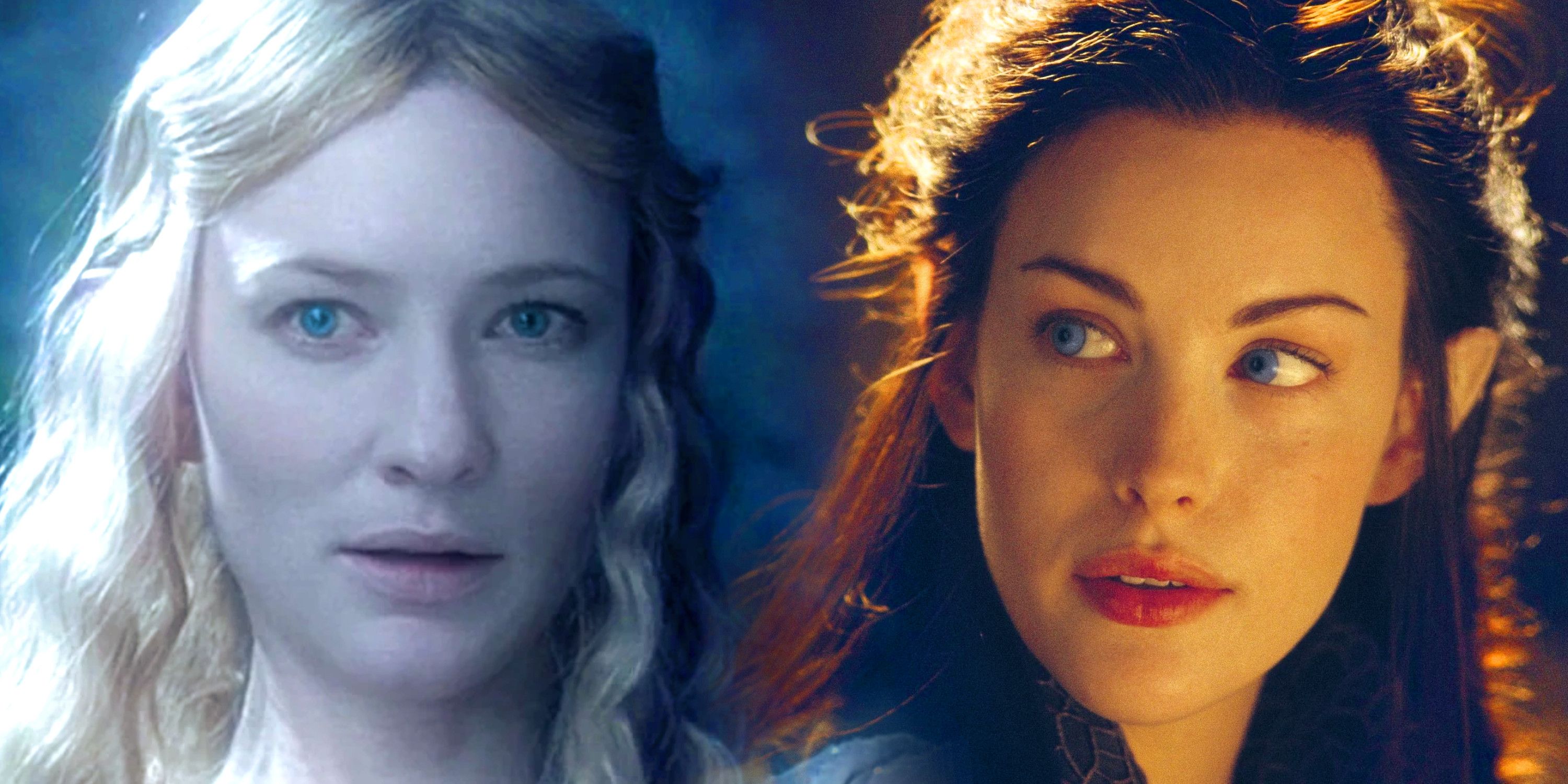
In Peter Jackson’s trilogy of film adaptations, Arwen and Galadriel do not share any scenes. A photo exists of the two characters together in Lothlórien, but Jackson chose not to include the scene from which it originated even in the extended edition of the film. It makes sense that the two did not interact on-screen because Galadriel lives in Lothlórien while Arwen lives in Rivendell. The Misty Mountains divide the two Elven Realms, so travel between them is no easy matter. However, Arwen and Galadriel have a connection. Though the films do not spell it out, J. R. R. Tolkien’s The Lord of the Rings novel revealed that they were blood relatives.
A Chance Meeting in Rivendell Sparks an Important Romance
Galadriel’s Daughter, Celebrían, Marries Elrond (Eventually)
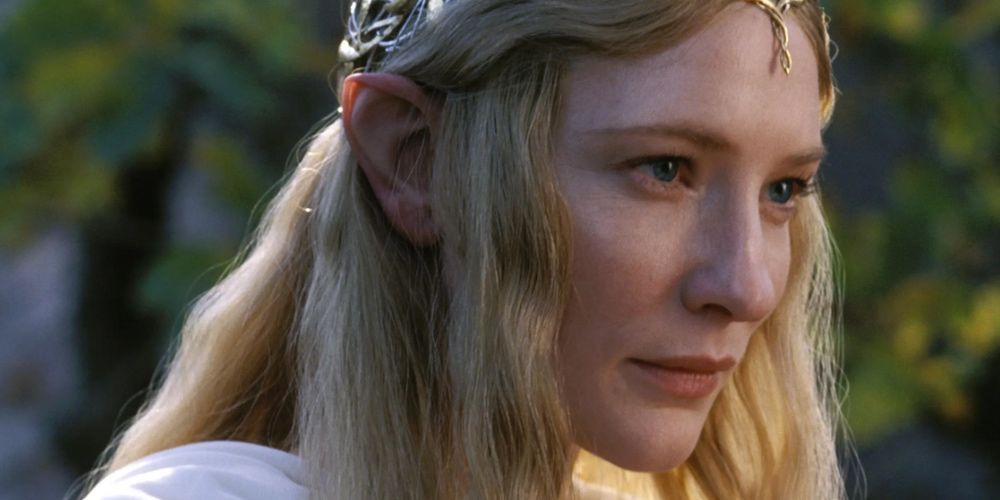
Galadriel and her husband, Celeborn, had a daughter named Celebrían. During the Second Age of Middle-earth, they all lived together in Eregion. However, in the middle of the Second Age, Sauron’s influence in Eregion grew. Under the fair guise of Annatar, the Lord of Gifts, he managed to turn the people against Galadriel. Thus, around the year S.A. 1350, Galadriel and Celebrían moved to Lothlórien.
Celeborn refused to join them since he disliked Dwarves and therefore did not want to travel through Moria. He stayed in Eregion until the realm’s destruction at the hands of Sauron in S.A. 1697. He and the other survivors of Sauron’s attack fled to the north, where Elrond established Rivendell. After Sauron’s temporary defeat in S.A. 1701, Galadriel and Celebrían went to Rivendell to reunite with Celeborn. There, Elrond and Celebrían met.
The former was immediately smitten, but it took him a few centuries to admit his feelings. They married early in the Third Age, and in T.A. 241, Celebrían gave birth to Arwen. This makes Galadriel the grandmother of Arwen. It also makes her the mother-in-law of Elrond and the grandmother-in-law of Aragorn. Even before Arwen married Aragorn in The Lord of the Rings, she was connected to multiple lines of royalty; her father was the Lord of Rivendell, her grandmother was the Lady of Lothlórien, and she was a descendant of the first kings of all three Elven clans.
Arwen and Galadriel Inherited Ancient Beauty
Both Embody Elvish History
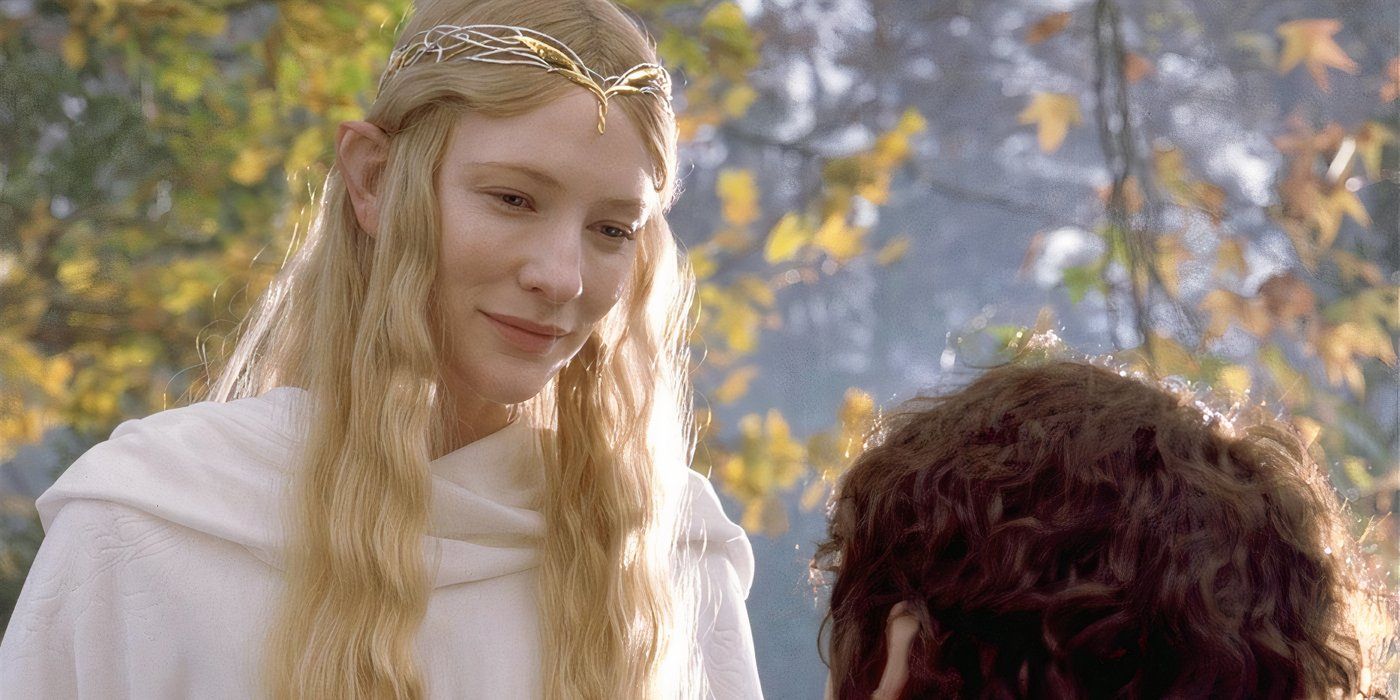
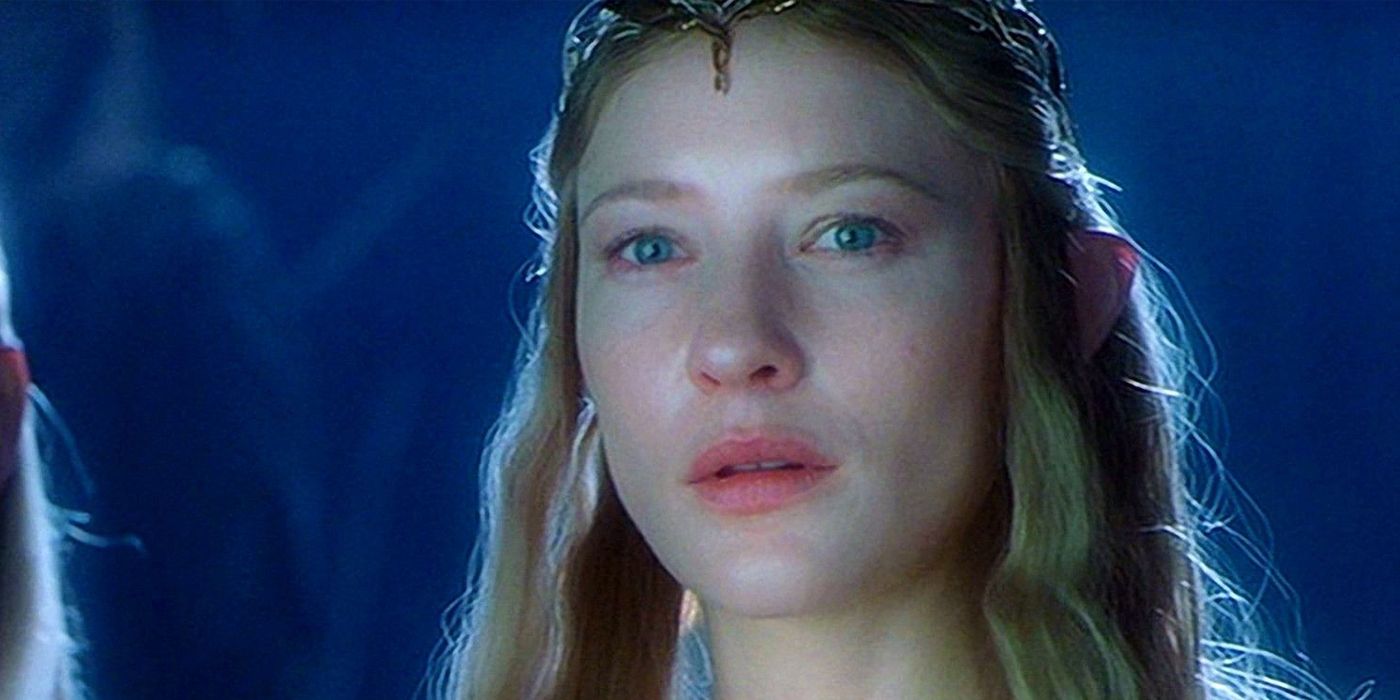
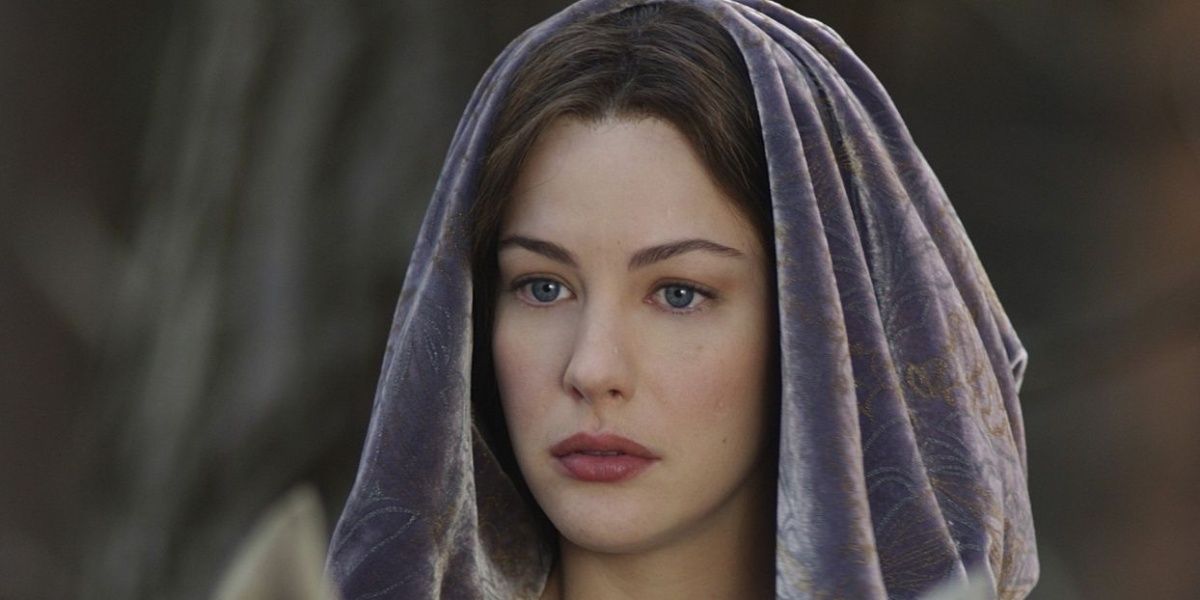
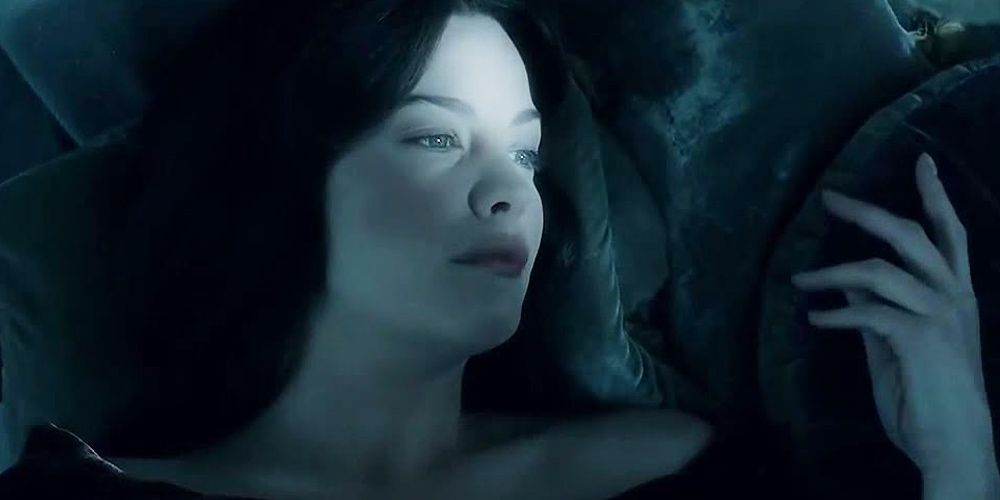




Despite their familial relationship, there was little physical resemblance between Arwen and Galadriel in either Tolkien’s novels or Jackson’s films. The most obvious difference between them was their hair color. Arwen had dark hair like her father, which was common for Elves from the Noldor clan. Arwen bore a striking resemblance to one of her ancestors, Lúthien. This was significant since Lúthien was the first Elf to marry a mortal Man in Tolkien’s legendarium, foreshadowing Arwen’s romance with Aragorn.
Galadriel instead had blonde hair, but it was no ordinary shade of blonde. In the section “The History of Galadriel and Celeborn” from Unfinished Tales of Númenor and Middle-earth, Tolkien described it as a mixture of “gold” and “starlike silver.” Galadriel was a Noldor like Arwen, but she inherited the golden hair of her grandmother, a Vanyar, and the silver hair of her mother, a Teleri. The mixture of gold and silver represented the light of the Two Trees of Valinor, which other Elves believed “had been snared in her tresses.”
Arwen and Galadriel Have Beauty In Common
Gimili and Eomer Debate Who Is More Beautiful
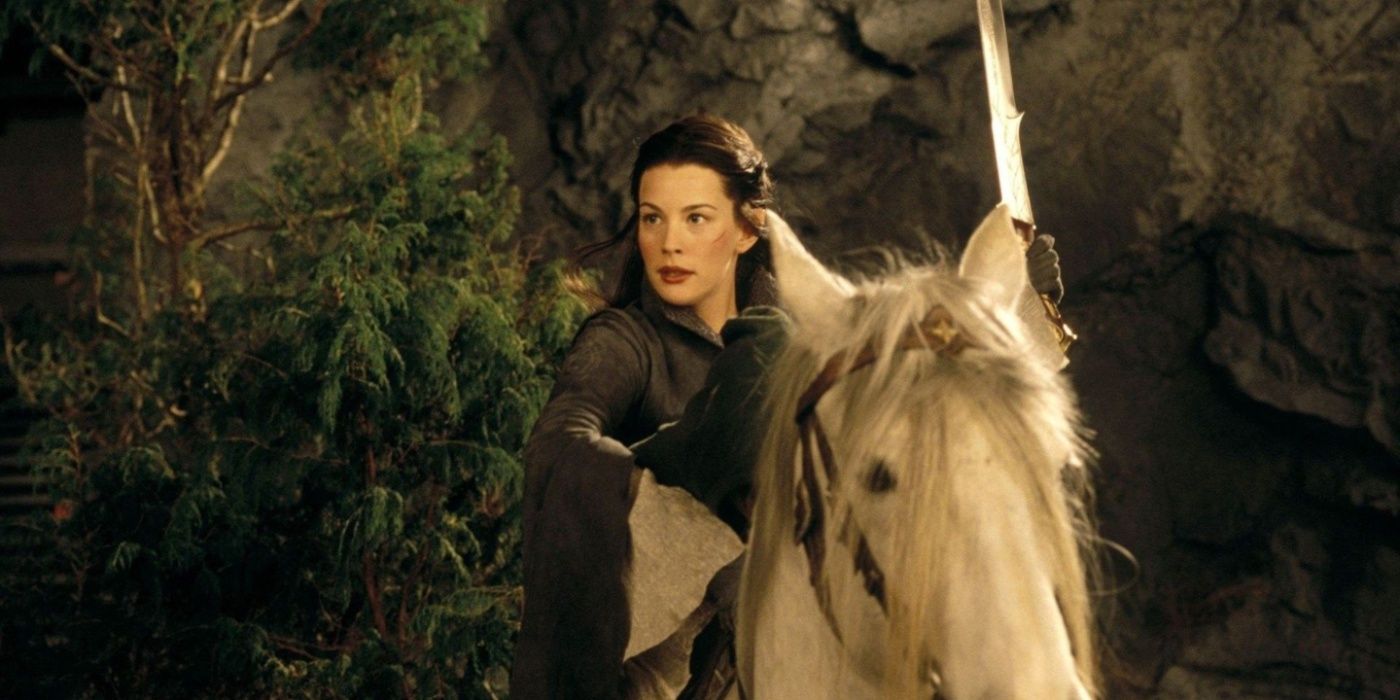
A trait that Arwen and Galadriel had in common was their beauty, which was exceptional even by the standards of Elves. When Frodo met Arwen in the chapter “Many Meetings” from The Fellowship of the Ring, Tolkien wrote, “Such loveliness in living thing Frodo had never seen before nor imagined in his mind.” In fact, Frodo is one of the few mortals to have seen Arwen at that point and sees her skin as “flawless and smooth,” her hair as “dark as the shadows of twilight,” and her eyes as shining like stars.
The section “Of Eldamar and the Princes of the Eldalië” from The Silmarillion described Galadriel as the “most beautiful of all the house of Finwë.” Fëanor was especially taken with Galadriel’s beauty. In the same part of The Unfinished Tales mentioned above, Tolkien writes that “Fëanor beheld the hair of Galadriel with wonder and delight.” He asked her three times for a lock of her hair, but she refused him “even one hair.” Fëanor seems to have been inspired by her hair to imprison the light of the Two Trees of Valinor in the Silmarils.
In the novel version of The Lord of the Rings, Éomer and Gimli argued over who was the most beautiful being in Middle-earth; the former believed it was Arwen, but the latter believed it was Galadriel. Tolkien would have agreed with Éomer, as he based the appearance of Lúthien — and by extension, Arwen — on that of his wife, Edith. According to the section “Of Thingol and Melian” from The Silmarillion, Lúthien was “the fairest of all… that was or shall ever be.”
Arwen and Galadriel Played Greater Parts in Adaptations
They Both Take on Warrior-like Roles
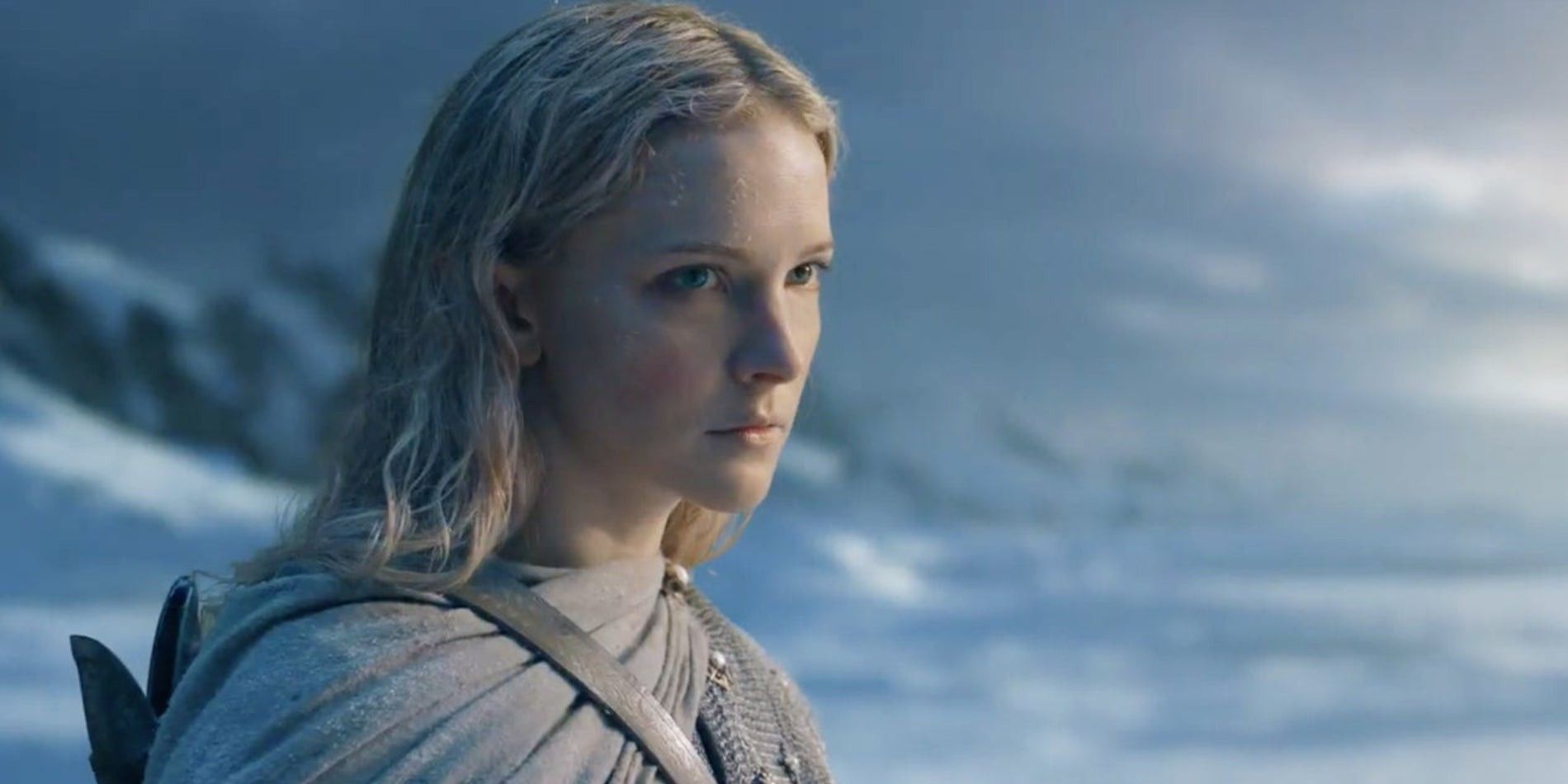
Despite their importance, Arwen and Galadriel did not appear often in The Lord of the Rings novel. Frodo met them both in The Fellowship of the Ring, after which neither returned until the end of The Return of the King. Various adaptations of The Lord of the Rings have expanded Arwen and Galadriel’s roles. In Jackson’s films, Arwen was a warrior, which was not the case in Tolkien’s version of the story. She replaced the character Glorfindel from the novel by being the one to rescue Frodo from the Nazgûl, and there were deleted scenes of Arwen fighting at Helm’s Deep.
Instead, The Lord of the Rings: The Two Towers and The Return of the King include instances of Arwen communicating with Aragorn in his dreams. They also portray discussions between Arwen and Elrond regarding her choice to remain in Middle-earth instead of sailing to the Undying Lands. Similarly, in The Two Towers, Galadriel and Elrond had a telepathic conversation about Frodo’s fate and the growing threats to Middle-earth.
Jackson also inserted Galadriel into The Hobbit trilogy even though she was not part of the novel. Prime Video’s The Lord of the Rings: The Rings of Power chose Galadriel as the series’ protagonist, focusing primarily on her life in the Second Age. Arwen will probably not appear in The Rings of Power since she was not born until the Third Age, although, she could be part of a flash-forward. Some Elves had foresight in The Lord of the Rings, and the first season already teased the use of a palantír to see visions of the future, so Morfydd Clark’s version of Galadriel might catch a glimpse of her granddaughter.


